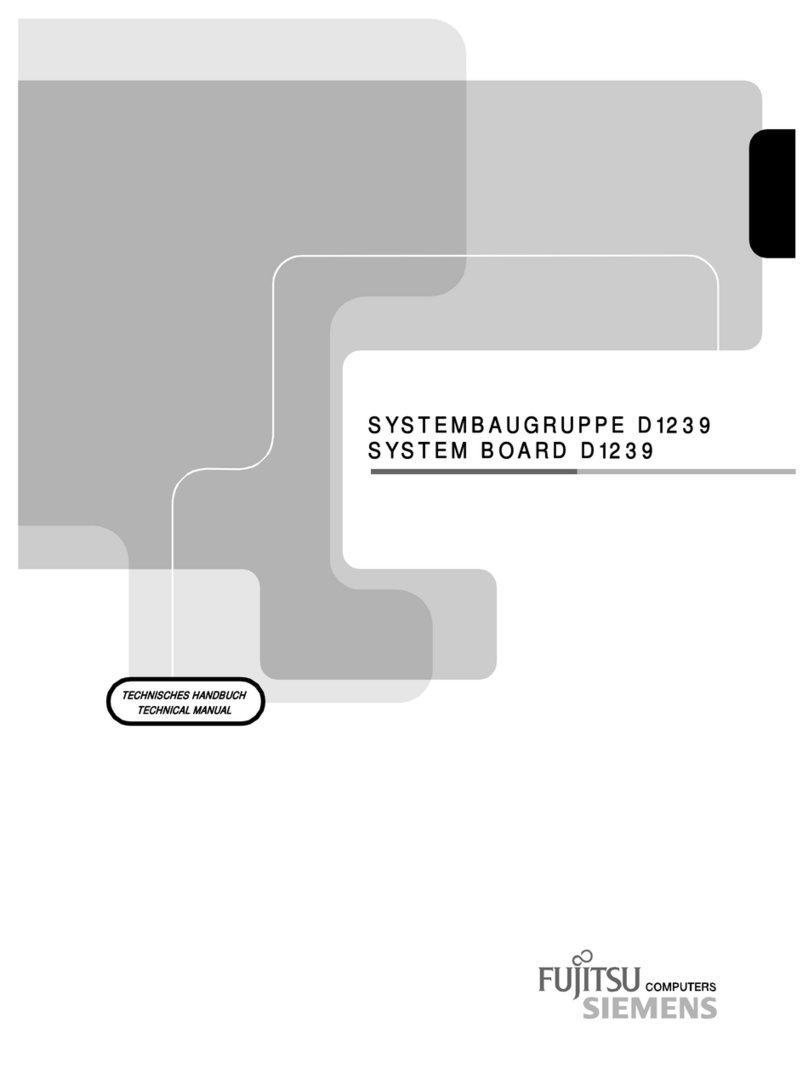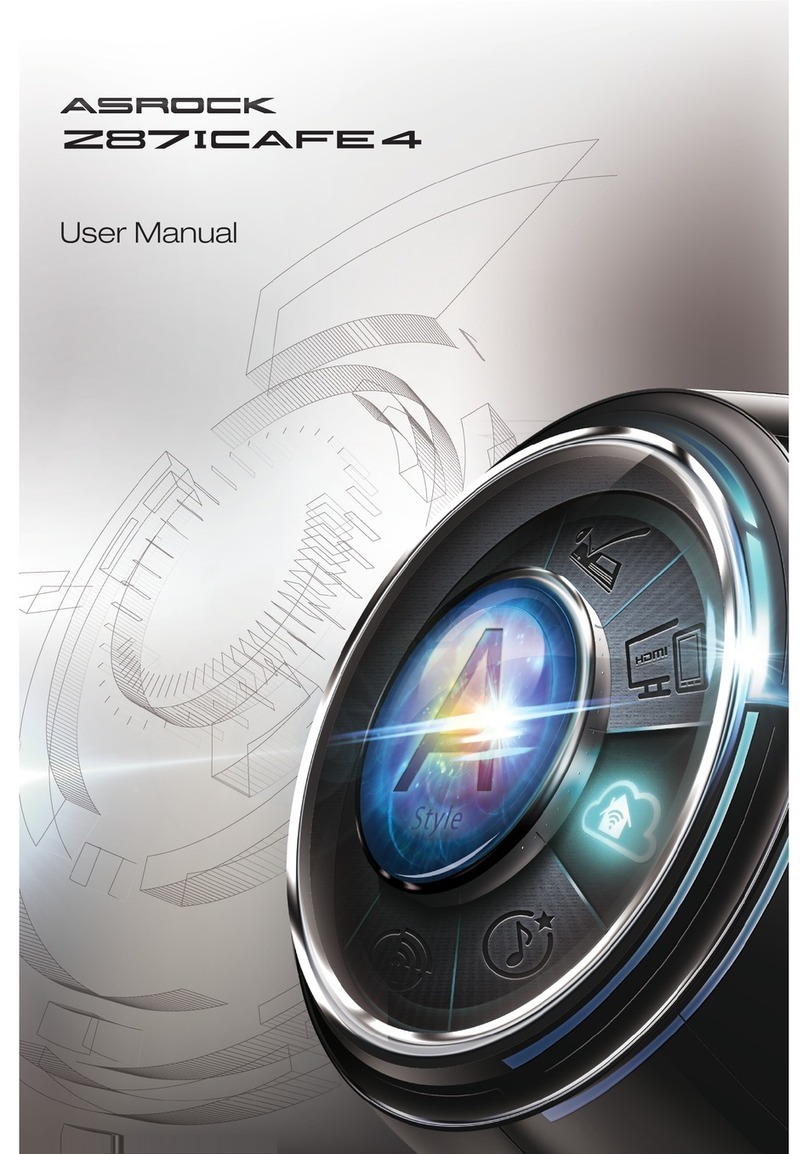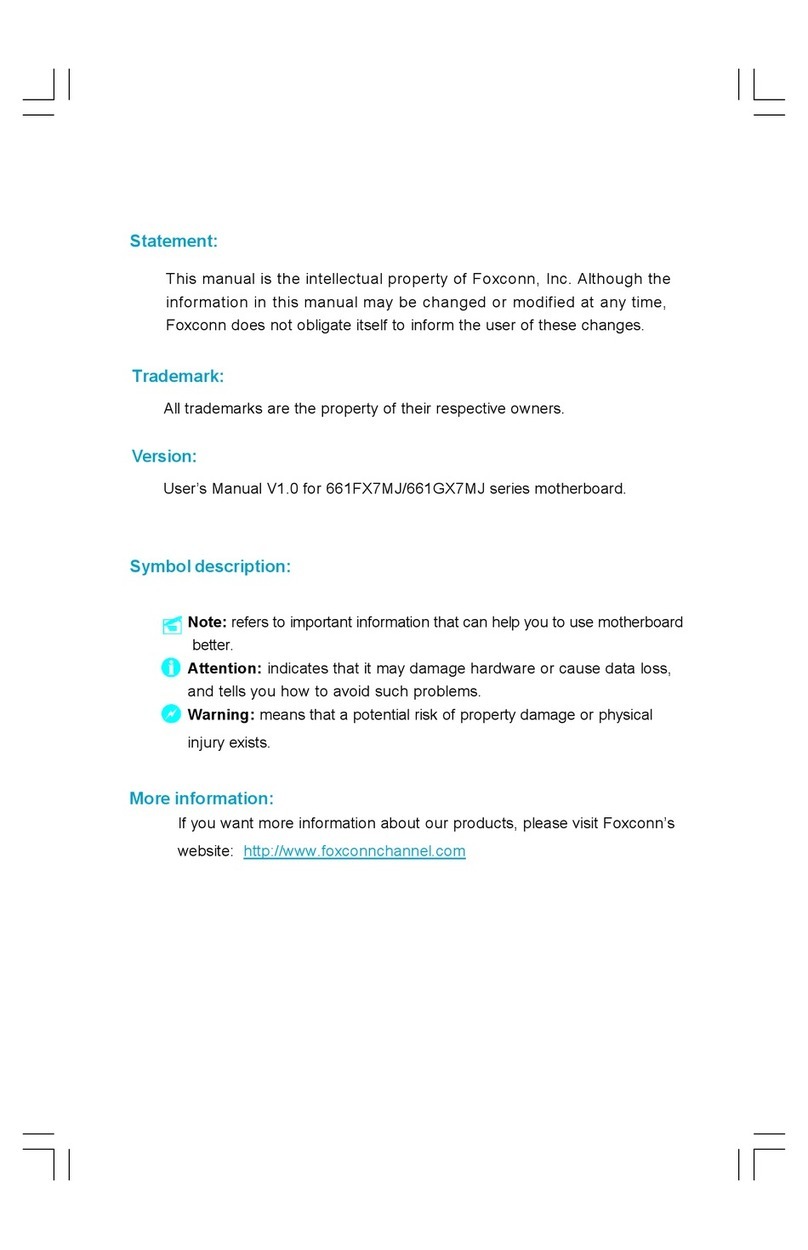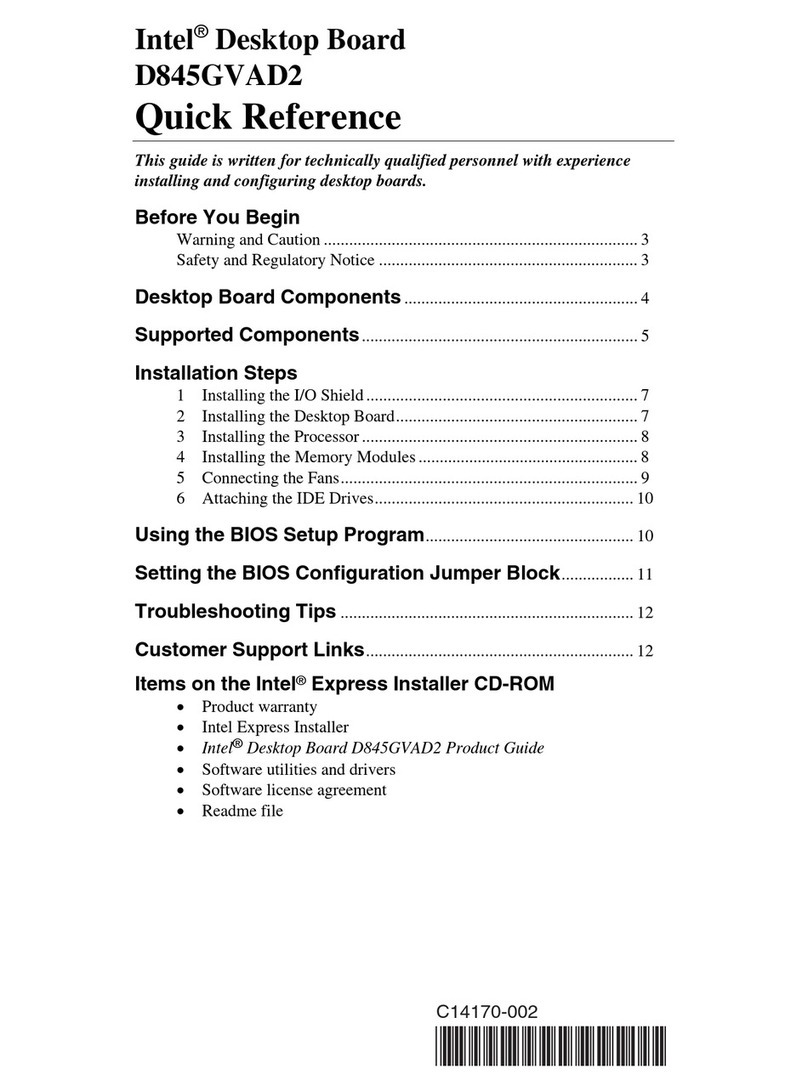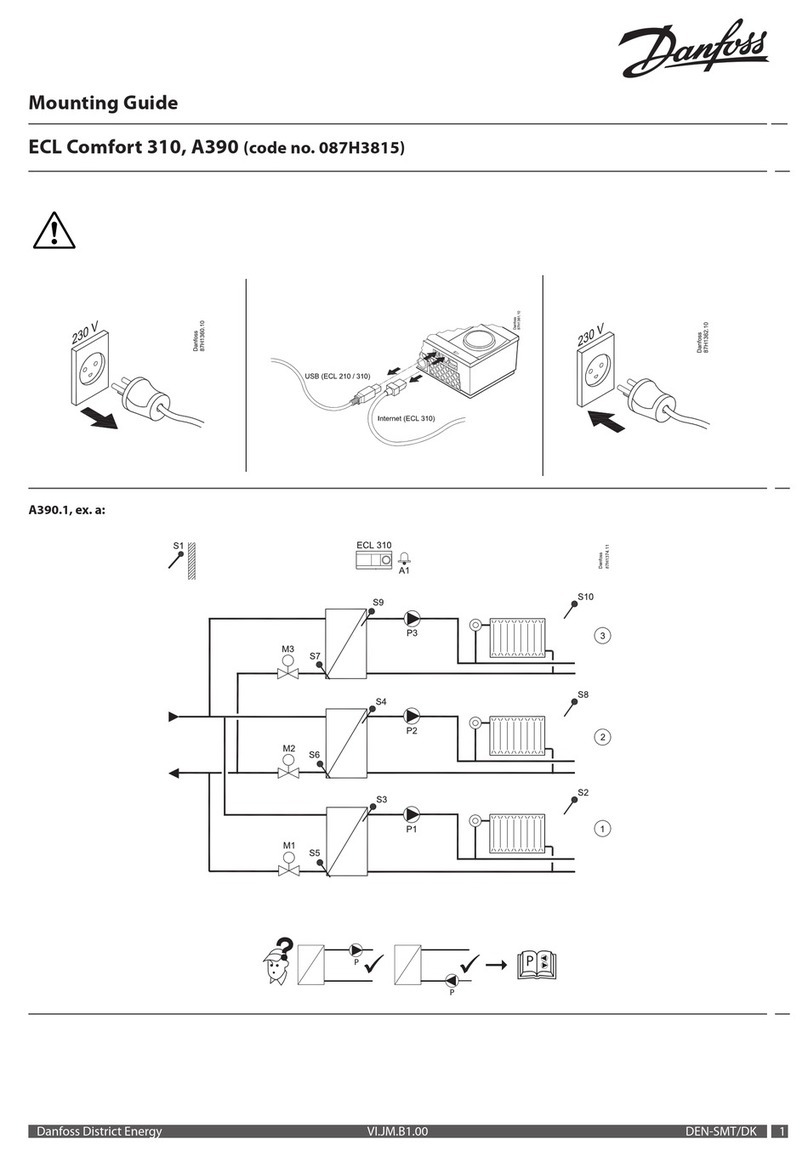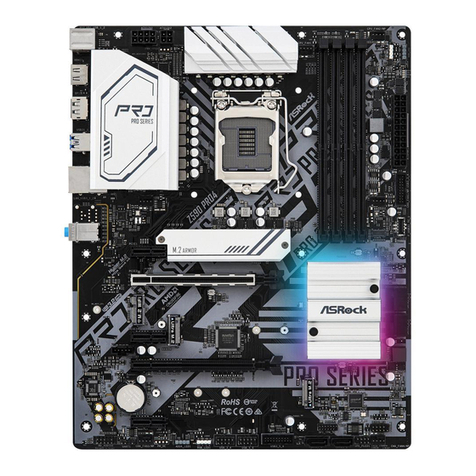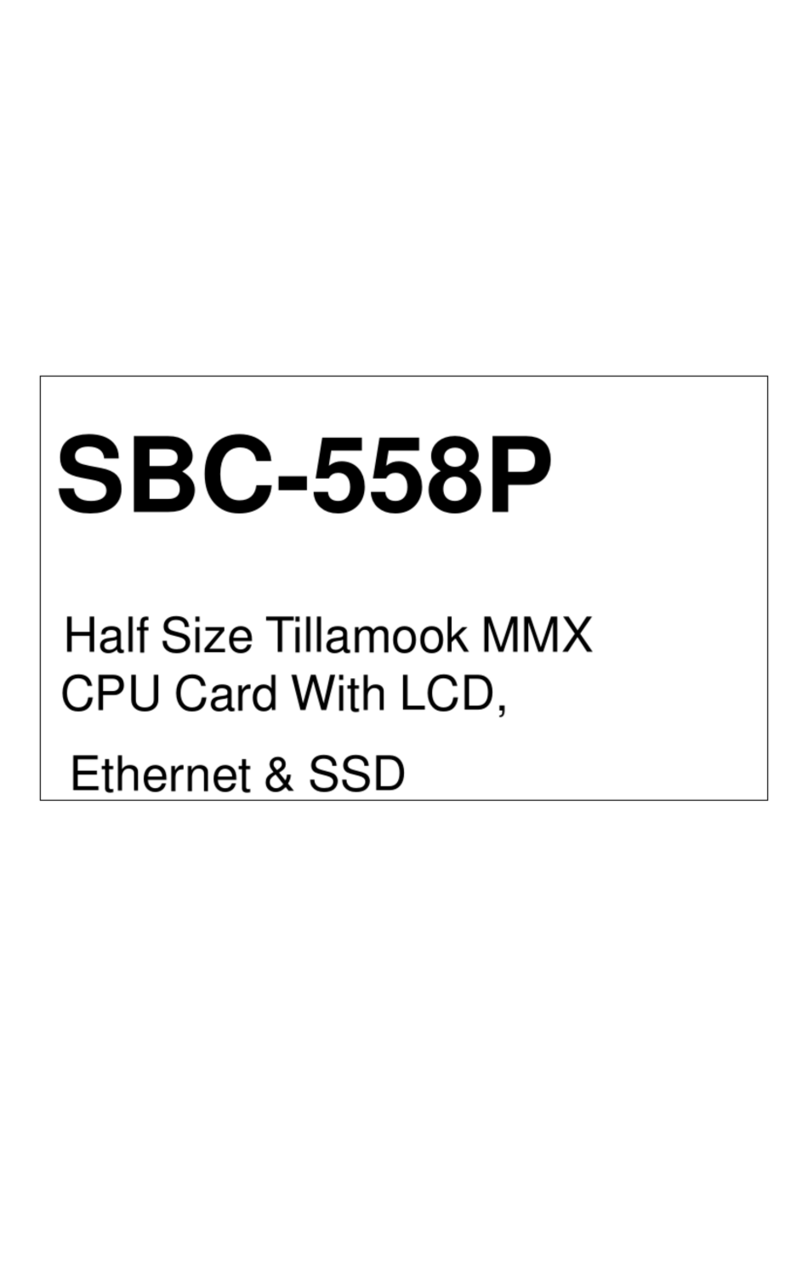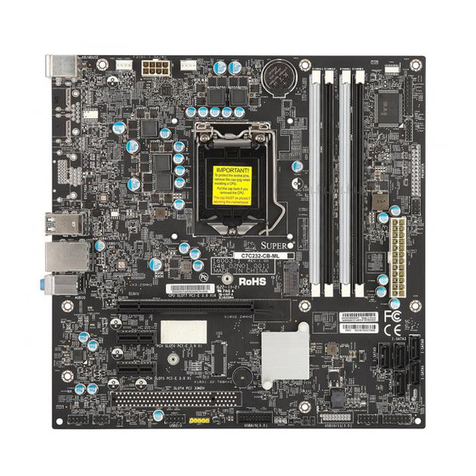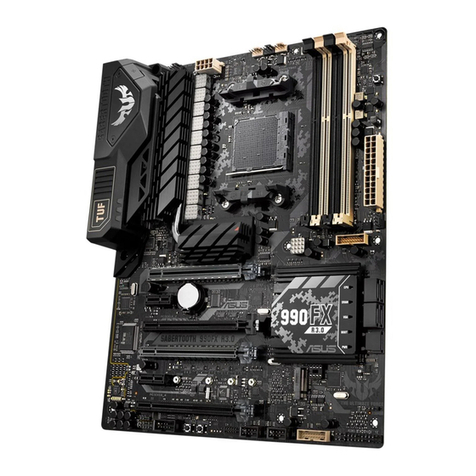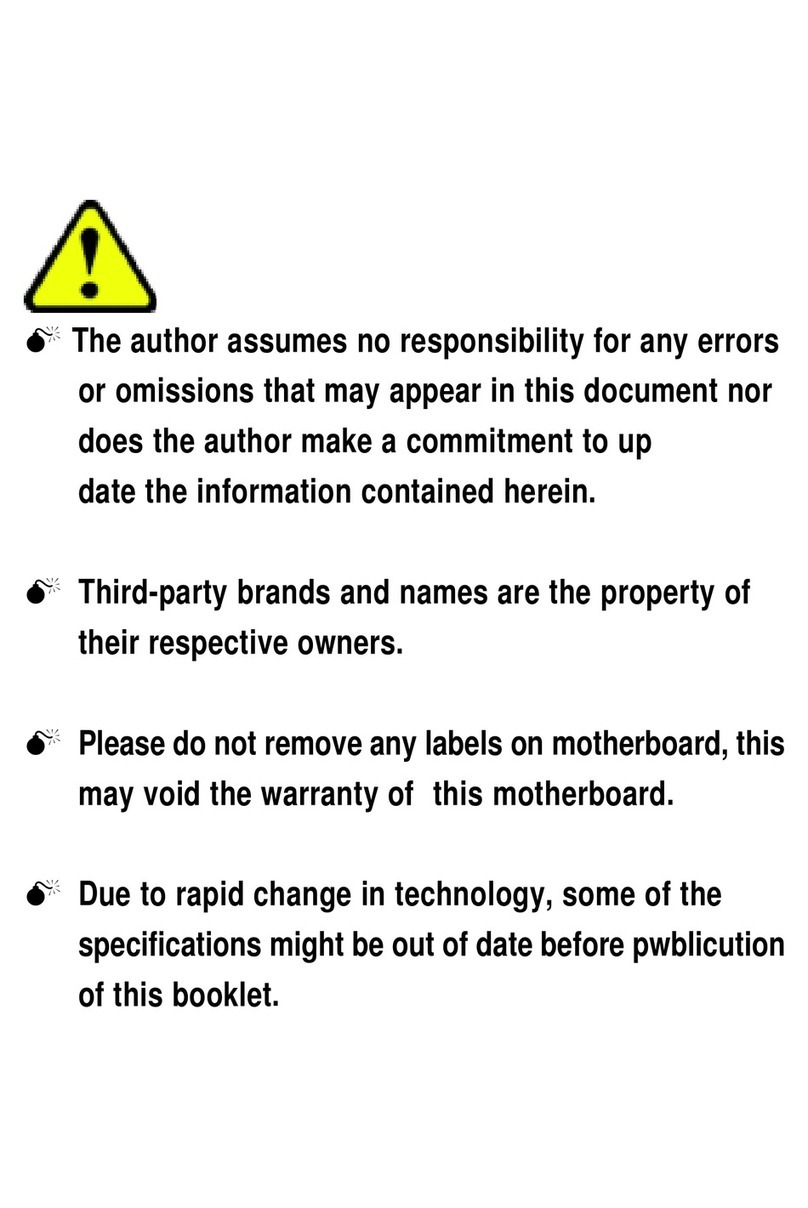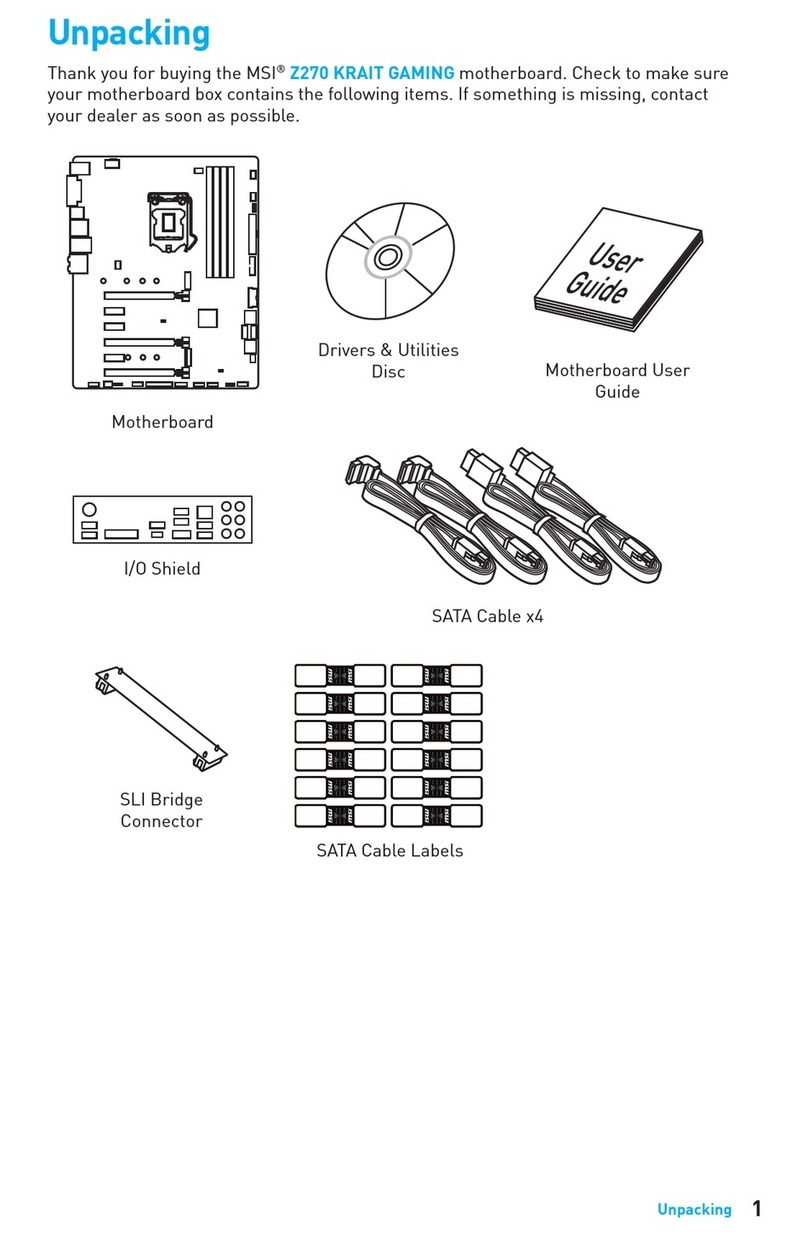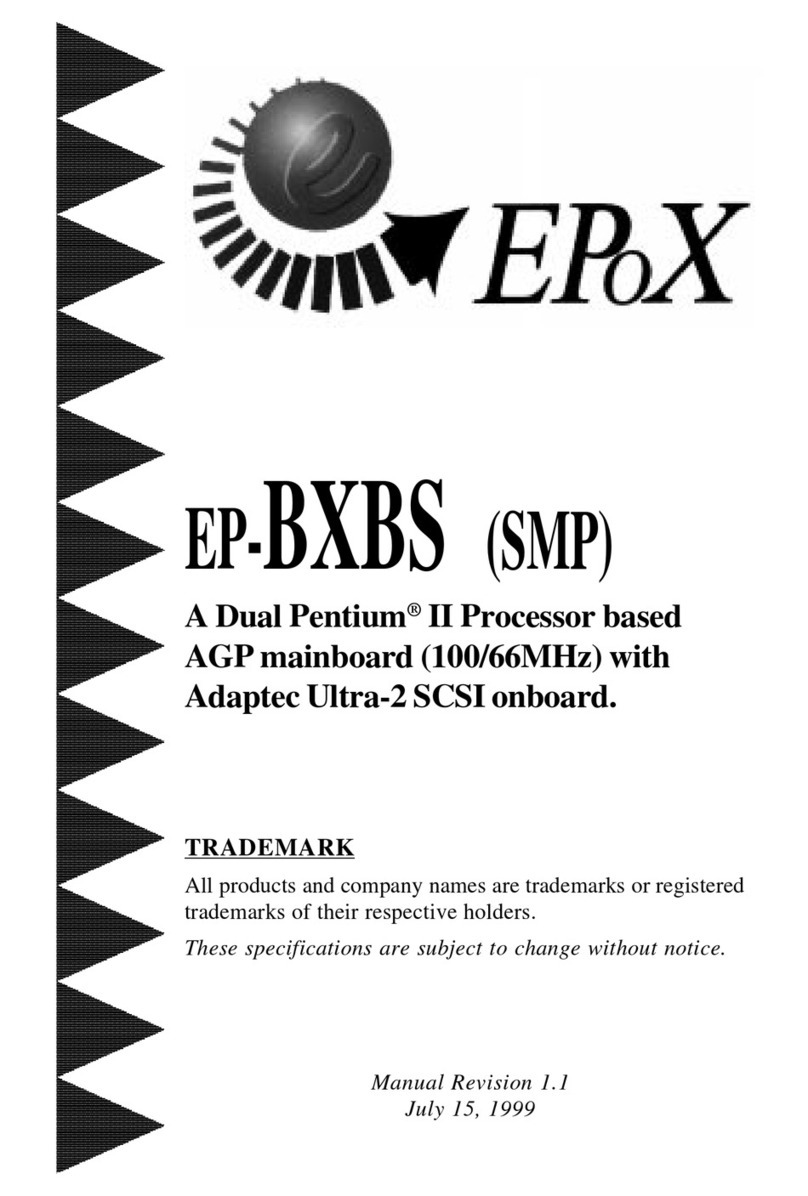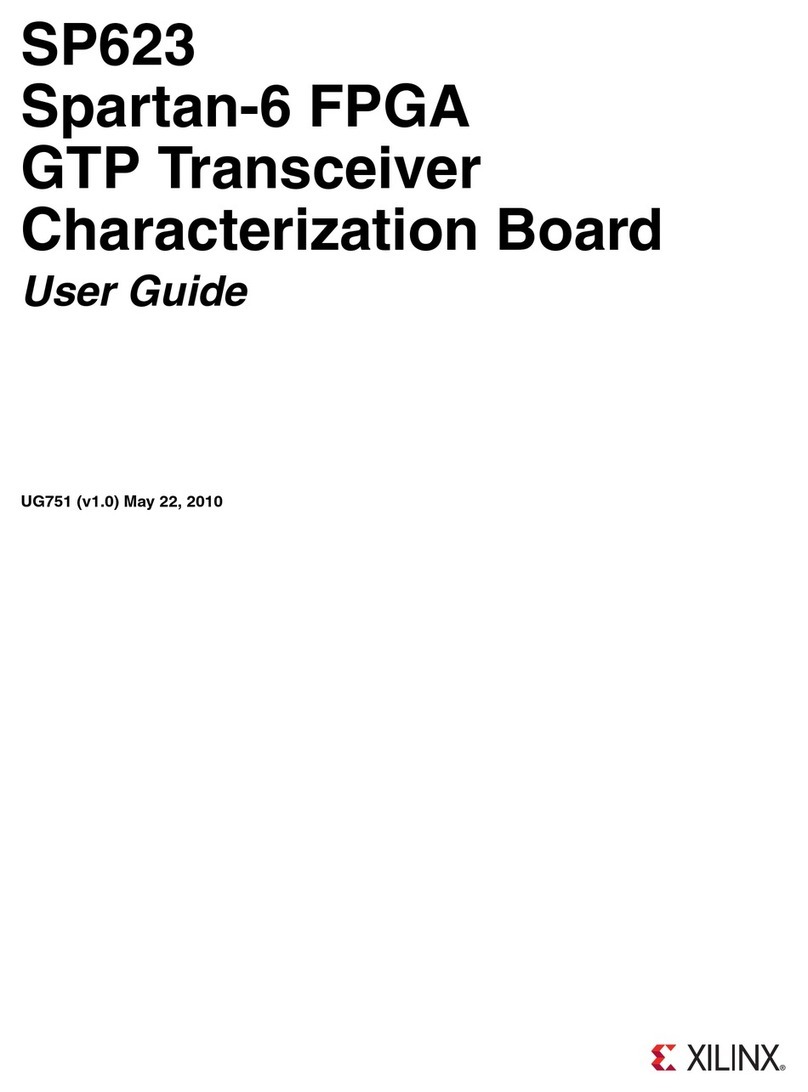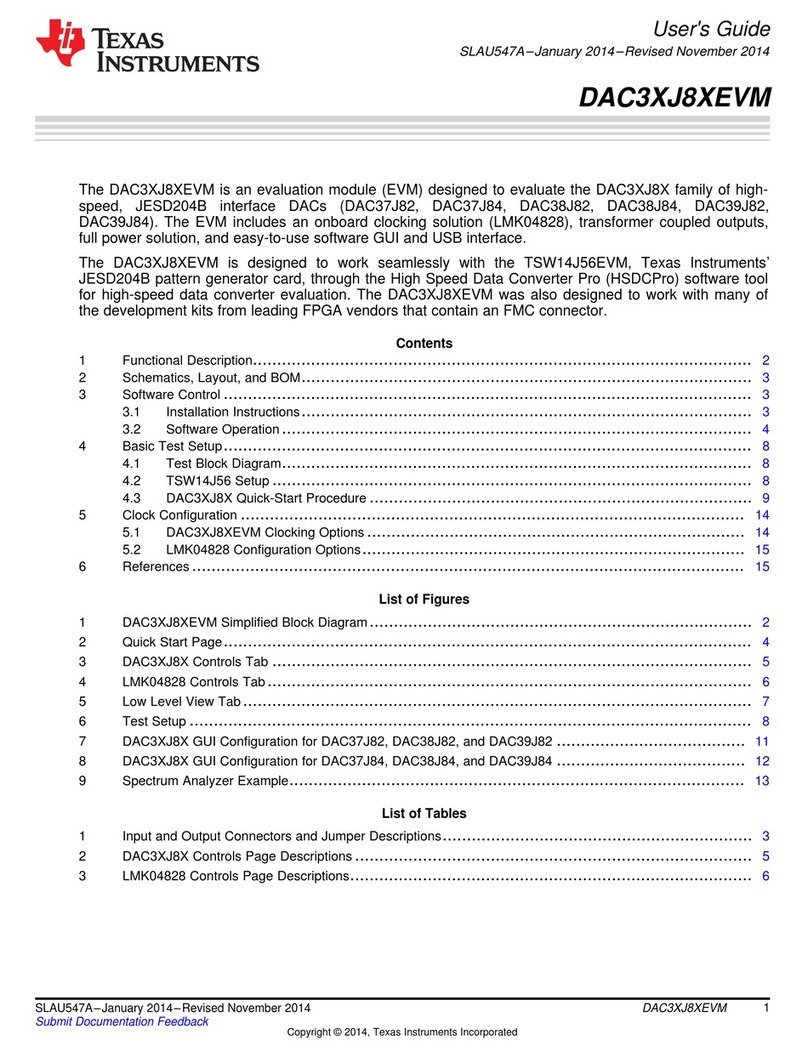Technologic Systems TS-72XX series User manual

TS-7250 MANUAL
© Jan, 2010 www.embeddedARM.com 1
www.embeddedARM.com
Revision 2.6
© Jan, 2010
TS-7250
Hardware Manual

TS-7250 MANUAL
Feedback and Update to this Manual
To help our customers make the most of our products, we are continually making additional and
updated resources available on the Technolo ic Systems website (www.embeddedARM.com).
These include manuals, application notes, programming e amples, and updated software and
firmware. Check in periodically to see what's new!
When we are prioritizing work on these updated resources, feedback from customers (and prospective
customers) is the number one influence. If you have questions, comments, or concerns about your
Embedded Computer, please let us know at [email protected].
Limited Warranty
Technologic Systems warrants this product to be free of defects in material and workmanship for a
period of one year from date of purchase.
During this warranty period Technologic Systems will repair or replace the defective unit in accordance
with the following process:
A copy of the original invoice must be included when returning the defective unit to Technologic
Systems, Inc.
This limited warranty does not cover damages resulting from lightning or other power surges, misuse,
abuse, abnormal conditions of operation, or attempts to alter or modify the function of the product.
This warranty is limited to the repair or replacement of the defective unit. In no event shall Technologic
Systems be liable or responsible for any loss or damages, including but not limited to any lost profits,
incidental or consequential damages, loss of business, or anticipatory profits arising from the use or
inability to use this product.
Repairs made after the e piration of the warranty period are subject to a repair charge and the cost of
return shipping. Please, contact Technologic Systems to arrange for any repair service and to obtain
repair charge information.
FCC Advisory Statement
This equipment generates, uses, and can radiate radio frequency energy and if not installed and used
properly (that is, in strict accordance with the manufacturer’s instructions), may cause interference to
radio and television reception. It has been type tested and found to comply with the limits for a Class A
computing device in accordance with the specifications in Subpart J of Part 15 of FCC Rules, which
are designed to provide reasonable protection against such interference when operated in a
commercial environment. Operation of this equipment in a residential area is likely to cause
interference, in which case the owner will be required to correct the interference at his own e pense.
If this equipment does cause interference, which can be determined by turning the unit on and off, the
user is encouraged to try the following measures to correct the interference:
•Reorient the receiving antenna.
•Relocate the unit with respect to the receiver.
•Plug the unit into a different outlet so that the unit and receiver are on different branch circuits.
•Ensure that mounting screws and connector attachment screws are tightly secured.
•Ensure that good quality, shielded, and grounded cables are used for all data communications.
If necessary, the user should consult the dealer or an e perienced radio/television technician for
additional suggestions. The following booklets prepared by the Federal Communications Commission
(FCC) may also prove helpful:
•How to Identify and Resolve Radio-TV Interference Problems (Stock No. 004-000-000345-4)
•Interface Handbook (Stock No. 004-000-004505-7)
These booklets may be purchased from the Superintendent of Documents, U.S. Government Printing
Office, Washington, DC 20402.
© Jan, 2010 www.embeddedARM.com 2

TS-7250 MANUAL
TABLE OF CONTENTS
TABLE OF CONTENTS
1 INTRODUCTION................................................................................................................5
1.1 About this Manual...............................................................................................................5
1.2 TS-72XX Series...................................................................................................................5
1.3 Product Overview...............................................................................................................5
1.4 Benefits................................................................................................................................5
Out-of-the-Box Productivity.......................................................................................................5
Impressive Performance............................................................................................................6
1.5 Features...............................................................................................................................6
1.6 Confi urability....................................................................................................................6
On-board Options.......................................................................................................................6
External Accessories.................................................................................................................7
1.7 PC/104 Peripherals.............................................................................................................8
1.8 TS-ARM Development Kit...................................................................................................8
1.9 Software and Support.........................................................................................................9
Linux OS Support.....................................................................................................................10
Other OS Support ....................................................................................................................10
2 GETTING STARTED.......................................................................................................11
2.1 Installation Procedure......................................................................................................11
Handlin the Board Safely.......................................................................................................11
Setup and Installation Instructions ........................................................................................11
Setup Tools ..............................................................................................................................11
Setup Procedure ......................................................................................................................11
Disconnectin AC Power ........................................................................................................11
2.2 Console and Power Up.....................................................................................................11
2.3 Boot Sequence..................................................................................................................12
2.4 Loadin or Transferrin Files..........................................................................................13
Transferrin Files via the Ethernet Port.................................................................................13
Transferrin Files via Flash Memory Device..........................................................................13
Zmodem Downloads................................................................................................................13
3 HARDWARE COMPONENTS.........................................................................................14
3.1 Processor..........................................................................................................................14
Cirrus EP9302...........................................................................................................................14
MMU...........................................................................................................................................15
Interrupts...................................................................................................................................15
3.2 Memory..............................................................................................................................16
On-Board SDRAM.....................................................................................................................16
Battery Backed SRAM..............................................................................................................16
On-Board NAND Flash.............................................................................................................17
USB Flash Drive or Compact Flash Card...............................................................................17
3.3 Glue Lo ic CPLD...............................................................................................................18
3.4 Real-Time Clock................................................................................................................18
3.5 Watchdo Timer................................................................................................................19
4 COMMON INTERFACES GENERAL INFORMATION...................................................20
4.1 Serial Ports .......................................................................................................................20
4.2 Di ital I/O...........................................................................................................................20
© Jan, 2010 www.embeddedARM.com 3

TS-7250 MANUAL
TABLE OF CONTENTS
4.3 A/D Converters..................................................................................................................21
5 CONNECTORS AND HEADERS....................................................................................22
5.1 10/100 Base-T Ethernet Connector..................................................................................22
5.2 USB Connector.................................................................................................................22
5.3 COM1 Connector...............................................................................................................23
5.4 COM2 Header....................................................................................................................24
Optional RS-485 Support.........................................................................................................24
RS-485 Quick-Start Procedure................................................................................................25
Automatic RS-485 TX Enable ..................................................................................................25
5.5 DIO1 Header......................................................................................................................26
SPI Interface..............................................................................................................................27
Matrix Keypad...........................................................................................................................27
5.6 A/D Header - Cirrus EP9302.............................................................................................28
Interpretin Cirrus A/D Converter...........................................................................................28
5.7 A/D Header - Optional MAX197........................................................................................29
Sin le Sample Acquisition Procedure....................................................................................29
5.8 LCD Header.......................................................................................................................30
LCD Interface............................................................................................................................30
5.9 JTAG Header.....................................................................................................................31
5.10 Power Supply Header.....................................................................................................32
6 PC/104 BUS EXPANSION..............................................................................................33
6.1 Addin Serial Ports ..........................................................................................................34
6.2 Addin Ethernet Ports .....................................................................................................35
6.3 Addin CAN Bus ..............................................................................................................35
6.4 Addin Video Support .....................................................................................................35
7 LEDS, JUMPERS AND BUTTONS.................................................................................36
7.1 Status LEDs.......................................................................................................................36
7.2 Jumpers.............................................................................................................................36
7.3 Buttons..............................................................................................................................36
8 SPECIFICATIONS...........................................................................................................37
9 FURTHER REFERENCES..............................................................................................38
APPENDIX A: DOCUMENT HISTORY...............................................................................39
APPENDIX B: MEMORY AND REGISTER MAP...............................................................40
APPENDIX C: DOWNLOADS - SCHEMATICS AND MECHANICAL DRAWING............42
APPENDIX D: TS-ARM SBC FEATURE MATRIX.............................................................43
APPENDIX E: CONTACT TECHNOLOGIC SYSTEMS.....................................................44
© Jan, 2010 www.embeddedARM.com 4

TS-7250 MANUAL
INTRODUCTION
1 INTRODUCTION
1.1 About this Manual
This manual is intended to provide the user with an overview of the board and benefits,
complete features specifications, and set up procedures. It contains important safety
information as well.
1.2 TS-72XX Series
The TS-72XX series Single Board Computers (SBC's) run on a 200 MHz ARM9 processor
with power as low as 1/2 Watt. Low board comple ity, low component count, and low
power/heat makes for an e tremely reliable embedded engine. The TS-72XX SBC's are
available in thousands of configurations, many of which are Commercial off the Shelf
(COTS) and available to ship today.
The EP9302 processor from Cirrus is the highly integrated 200Mhz ARM9 processor that
the TS-72XX SBC's are built around and includes an on-chip 10/100 ethernet, USB, serial,
and Flash/SDRAM controller. For e ample, on the TS-7200 model there is 32 Mb of
Micron SDRAM running at 66 Mhz and 8 Mb Intel Strata flash on-board. A supplemental
PLD provides glue logic, watchdog timer, Compact Flash IDE, and 8 bit PC/104 support.
Integer CPU performance is about 20% faster than our 133 Mhz 86 offerings.
Even with the standard power consumption of 2 Watts, the TS-72XX SBC’s run without
fans or heat sinks in the temperature range of -20° to +70°C. E tended Temperature -40°
to +85°C is also standard, but CPU clock must be decreased to about 166MHz for higher
temperatures. Digital Signal Processing (DSP) is enabled through a standard 5 channel,
12bit A/D converter (Optional 8 channel, 12 bit A/D converter), 20 DIO lines and 2
standard serial ports.
The 8/16 bit PC/104 interface enables additional functionality through Technologic
Systems’ broad product line of PC/104 peripheral daughter boards. The TS-7KV adds
video, CAN, Com Ports, and A/D conversion. The TS-ETH10 allows the addition of
Ethernet ports. The TS-CAN adds CAN connectivity. The TS-Modem boards add both
wired and cell phone capabilities.
The TS-72XX rugged ARM9 SBC's have found their way into many embedded
applications. Customers are using the TS-72XX series SBC's in: energy generation,
manufacturing process control, traffic management, printing system management,
communication infrastructure, website hosting, data gathering and laboratory test
equipment. We use a TS-7200 to host our complete website and to prepare and test your
SBC prior to shipping.
1.3 Product Overview
The TS-7250 is a compact, full-featured Single Board Computer (SBC) based upon the
Cirrus EP9302 ARM9 CPU. The EP9302 features an advanced 200 MHz ARM920T
processor design with a memory management unit (MMU) that allows support for high
level operating systems such as Linu , Windows CE, and other. As a general-purpose
processor, it provides a standard set of peripherals on board and a full set of Technologic
Systems featured peripherals via the standard PC/104 Bus.
1.4 Benefits
Out-of-the-Box Productivity
Technologic Systems Linu products get you to your application quickly. Our Single Board
Computers boot directly to Linu as shipped. There is no complicated CMOS setup or
configuring of a Linu derivative Operating System to source, define, and load.
Technologic Systems has pre-configured each SBC in flash memory.
© Jan, 2010 www.embeddedARM.com 5

TS-7250 MANUAL
INTRODUCTION
The TS-7250's user can power up the board and immediately begin application
development. Of course, should you wish to configure your own version of Linu or use a
different operating system, this is easy too. Technologic Systems provides the solution to
fast application development without tedious OS configuration.
Impressive Performance
The ARM920T's 32-bit architecture, with a five-stage pipeline, delivers very impressive
performance at very low power. The EP9302 CPU has a 16 KB instruction cache and a 16
KB data cache to provide zero-cycle latency to the current program and data, or they can
be locked to guarantee no-latency access to critical sections of instructions and data. For
applications with instruction-memory size restrictions, the ARM920T’s compressed Thumb
instruction set can be used to provide higher code density and lower Flash storage
requirements.
As a benchmark, the TS-7250's CPU integer performance, at a supplied 200 MHz, is
about twice as fast as the Technologic Systems 133MHz 586-based products.
1.5 Features
The TS-7250 comes standard with these features:
✔TS-Linux Embedded Operating System Installed
✔200 MHz ARM9 CPU with MMU
✔32 MB on-board NAND Flash (Boots to TS-Linu )
✔32 MB RAM
✔2 USB 2.0 Compatible OHCI ports (12 Mbit/s Ma )
✔2 serial ports (up to 230 Kbaud)
✔10/100 Megabit Ethernet port
✔20 total Digital I/O lines
✔5 channel 12-bit A/D converter
✔Watchdog Timer
✔PC/104 e pansion bus
✔SPI bus interface
✔Alphanumeric LCD and Matri keypad interfaces
✔Single +5VDC power supply @ 450 mA
✔Small size 3.8 4.5 inches (9.7 11.5 cm)
✔Operating Temperature Range: Fanless from -20° to +70°C
✔E tended Temperature -40° to +85°C standard at lower CPU clock speeds (166MHz)
1.6 Confi urability
The TS-7250 can be configured for your application using the following available on-board
options and e ternal accessories:
On-board Options
✔TS-7xxx-yyy-zzzF: up to “yyy” MB of on-board SDRAM and “zzz” MB of Flash memory
upgrade for TS-7 board models. For e ample, TS-7250-64-128F selects model TS-
7250 upgrade with 64 MB of SDRAM and 128 of NAND Flash.
© Jan, 2010 www.embeddedARM.com 6

TS-7250 MANUAL
INTRODUCTION
Model (xxx) SD AM (yyy) on-board Flash (zzz)
TS-7200 Up to 64 MB Up to 16 MB
TS-7250 Up to 64-128 MB Up to 64-128-256 MB
TS-7260 Up to 64-128 MB Up to 64-128-256 MB
✔OP-ADC: 12 bit 8 channel A/D Converter (TS-7200 and TS-7250)
✔OP-2TTLCOM: Two additional COM (COM4 and COM5) ports with TTL levels (TS-
7260)
✔OP-SDSOCKET: One SD Card socket for additional flash memory (TS-7260)
✔OP-BBRTC: on-board sealed-battery backed RTC
✔OP-TMPSENSE: High-precision temperature sensor
✔OP-485-FD: RS-485 full duple interface on COM2
✔OP-485-HD: RS-485 half duple interface on COM2
✔OP-16BIT-104: 16-bit PC/104 Connector
✔OP-STHRU-104: 16-bit Pass-Thru PC/104 Connector
✔OP-ROHS: RoHS directive compliant built board
Note
The TS-7250 SBC can be built compliant with the RoHS (Restriction of Hazardous
Substances ) Directive. Contact Technologic Systems for RoHS support.
External Accessories
✔CF-512-LIN: 512 MB Compact Flash Card with full ARM tool chain and Debian
installed (TS-7200)
✔SD-256: 256 MB SD Flash Card with full ARM tool chain installed and Debian (TS-
7260)
✔SD-512: 512 MB SD Flash Card with USB Interface, full ARM tool chain installed and
Debian (TS-7260)
✔USB Flash Drive: 256 MB with full ARM tool chain installed and Debian
✔OP-EJECT: Compact Flash Ejector (TS-7200)
✔WIFI-G-USB: Linu -supported USB 802.11g WiFi transceiver for wireless networking
✔OP-LCD-LED: Alphanumeric 2 24 LCD with back light and cable
✔OP-KPAD: Matri keypad with cable
✔PS-5VDC-REG: Regulated 5VDC Power Supply, 110 VAC Input
✔TS-ENC720: Metal Enclosure with Power Converter
✔RC-DB9: COM2 adapter cable to DB-9
In addition, a complete set of interfacing cables, connectors, and enclosures is available.
Note
Check our website at www.embeddedARM.com for an updated list of options
and e ternal accessories
© Jan, 2010 www.embeddedARM.com 7

TS-7250 MANUAL
INTRODUCTION
1.7 PC/104 Peripherals
Technologic Systems offers many add-on peripherals to complete the requirements of
your application. These products directly interface with the TS-7250 using the PC/104
bus, adding a wide variety of functionalities at very reasonable prices. Some of these
functionalities includes:
✔NVRAM - adds 32K, 128K, 1MB or 2MB bytes of battery-backed SRAM. Battery
backed SRAM provides non-volatile memory with very fast write times and unlimited
write cycles, unlike Flash memory. This can be very important if the data is constantly
being updated several times per minute, since Flash devices can wear-out after a few
million write cycles. It also eliminates the latency that Flash memory has during write
cycles. This resource is a byte-wide memory device using a lithium battery that will last
a minimum of 10 years with or without power applied.
✔Analog VIDEO interface – When a video monitor is needed.
✔CAN Bus – Useful for automotive applications.
✔Modems – Phone Line or GSM Cellular modems.
✔Additional Ethernet ports.
✔Additional DIO interface with either 24 or 64 new lines..
✔Additional 12 bit ADC and DAC: useful for industrial automation applications.
✔Additional COM and Parallel ports – Make more communication channels available.
✔Power-over-Ethernet
✔Radios – Long-range wireless radios, Xbee modules
Note
New PC/104 boards are always in development. Contact Technologic Systems or
visit the PC/104 peripherals pa e at our website for a complete and updated list
of additional functionalities that can be added to the TS-7250 using the PC/104
bus. You can also contact Technologic Systems about your custom project
desi n.
1.8 TS-ARM Development Kit
The TS-ARM Development Kit for the TS-7250 Single Board Computer includes all
equipment necessary to boot into the operating system of choice and start working. The
development kit is highly recommended for a quick start on application development.
The TS-ARM Development Kit contains a 256 or 512 MB Flash drive (Compact Flash for
7200, USB for 7250 and 7260) which includes:
© Jan, 2010 www.embeddedARM.com 8

TS-7250 MANUAL
INTRODUCTION
✔a self-hosting ARM installation of the Debian Linux 2.0 distribution compiled for ARM
✔gcc 2.95.4 and gcc 3.0 compiler with full tool-chain
✔Build tools and source for JFFS/YAFFS file system in on-board NAND Flash.
✔Hardware test routines source code and other e ample source code
✔Debian package system: apt-get, tasksel, dselect
The development kit additionally includes:
✔USB Compact Flash reader for TS-7200
✔5 VDC regulated power supply (international versions available)
✔NULL modem cable
✔Adapter cable from 10-pin header to DB9
✔Various cables for connection DIO, LCD, Keypad, etc.
✔Development CD with complete TS-Kernel source, manuals, e ample code, etc.
✔Printed supporting documentation for TS-72XX's Hardware, Linu for ARM and
Development Kit.
Note
Single Board Computer is not included on the Development Kit (sold separately).
1.9 Software and Support
Technologic Systems provides:
✔Free system software and documentation updates available on our web site
✔Free technical support by phone, fa , or email
✔30-day, money back guarantee on evaluation units
✔One-year, full warranty
© Jan, 2010 www.embeddedARM.com 9

TS-7250 MANUAL
INTRODUCTION
Linux OS Support
The ARM processor (the EP9302) comes from Cirrus and the platform is very similar to
the Cirrus EDB9302 evaluation board. Cirrus has strongly promoted running Linu on this
chip and has done most of the legwork in creating a patch set to the Linu 2.4 kernels, but
we have also had to modify the Linu Kernel (TS-Kernel) so it can support the 8MB on-
board Flash chip (via mtd drivers), the compact flash IDE driver, and the A/D converter. If
you want to use Linu and aren't tied to the 86 architecture, the TS-72XX boards can be
very cost-effective.
The TS-72XX SBC's are shipped standard with the
compact TS-Linu embedded operating system
installed in the on-board Flash memory. The full-
featured Debian Linu can also be used with an NFS
root file system or larger Flash drives, such as
Compact Flash cards, SD cards and USB flash
drives. The TS-Kernel used is based upon the version
2.4.26, patched and compiled for the Cirrus EP9302
ARM920T processor, and is real-time capable
through RTAI.
The root file system used by the Linu OS can be any of the following:
✔JFFS/YAFFS file system image in the on-board Flash (if using RedBoot, it should
include the option root=/dev/mtdblock1 to instruct the kernel to boot here)
✔EXT2 file system image in the Compact Flash card (if using RedBoot, it should include
the option root=/dev/hda)
✔NFS root, via Ethernet port (if using RedBoot, it should include the option root=/dev/nfs
nfsroot=<IP>:<DIRECTORY> ip=dhcp)
Note
The TS-Kernel supports the Real-Time Application Interface (RTAI project),
making the embedded operating system capable of handling applications with
hard real-time restrictions.
Other OS Support
The TS-7250 can be loaded with other operating systems such as Windows CE, NetBSD,
etc. Technologic Systems will provide support for these, and possibly other operating
systems, in the future. Currently, only Linux and NetBSD are supported on the TS-7250.
© Jan, 2010 www.embeddedARM.com 10

TS-7250 MANUAL
GETTING STARTED
2 GETTING STARTED
2.1 Installation Procedure
Before performing any set up or placement procedures, take the precautions outlined in
this section.
Handling the Board Safely
Be sure to take appropriate Electrostatic Discharge (ESD) precautions. Disconnect the
power source before moving, cabling, or performing any set up procedures.
!Warnin
Inappropriate handling may cause damage to the board.
Setup and Installation Instructions
Follow these guidelines for safety and ma imum product performance:
✔Observe local health and safety requirements and guidelines for manual material
handling
Setup Tools
Depending on placement and cabling, you may need the following tools:
✔Small flat-blade screwdriver
✔Small Phillips screwdriver
Setup Procedure
After locating, setting up, grounding, and cabling the TS-7250:
✔Apply power
✔Monitor the TS-7250 using a terminal emulator to verify that the board is operating
properly
Note
Your board might include a screw power connector on the power input. Notice this
connector is removible. Please pull this connectior off before applying power.
Disconnecting AC Power
✔Unplug from the power source.
✔Disconnect other cables as required.
2.2 Console and Power Up
The TS-72XX SBC's have no video controller or keyboard interface. This was done to
keep the board size small and the cost low. COM1 is typically used as a console port to
interface the TS-72XX to a standard terminal emulation program on a Host PC.
An ANSI terminal or a PC running a terminal emulator is required to communicate with
your Embedded PC. Simply connect an ANSI terminal (or emulator) to COM1 (DB9
female connector) using a null modem cable (this is included in the TS-ARM Development
Kit), using serial parameters of 115,200 baud, 8 data bits, no parity, no flow control, 1 stop
bit, and make sure jumper JP2 is installed. If you are running Linu , the minicom program
works well, Windows users can run the Hyperterm application. Technologic Systems
offers a null modem cable with both 25 pin and 9 pin connectors at each end as part
number CB7-05. Some systems also require the 10-pin header to 9-pin Sub-D adapter
© Jan, 2010 www.embeddedARM.com 11

TS-7250 MANUAL
GETTING STARTED
which is P/N: RC-DB9.
The console can be changed to COM2 by installing JP4 (with JP2 also installed). If your
application does not require a console or both COM ports are required, then removing the
jumper JP2 easily disables all console output.
Connect a regulated 5VDC, (1A minimum) power source using the included 2 screw
terminal strip/connector. Please note the polarity printed on the board. The boot
messages, by default, are all displayed on COM1 at 115200 baud.
2.3 Boot Sequence
The boot sequence has four distinct stages:
1. TS-BOOTROM messages
2. RedBoot ROM monitor messages
3. Linu Kernel messages
4. Login prompts
Upon power up, the board e ecutes proprietary Technologic Systems boot-code, TS-
BOOTROM, then immediately e ecutes RedBoot. RedBoot is a feature rich boot-ROM
monitor, that allows manipulation of the on-board flash, JFFS2/YAFFS2 images, loading
and e ecution of a kernel or e ecutable from either tftp (trivial ftp), serial console, or from
flash, and offers GDB debugging stubs.
If not interrupted by the user within one second, a pre-e isting RedBoot script is e ecuted,
loading a default Linu kernel into memory from on-board flash. This will cause the pre-
e isting JFFS2/YAFFS2 file-system to boot.
One can view the RedBoot defaults for the board, as well as the default script, by entering
at the RedBoot command prompt:
$ fconfig -l
The defaults can be changed by simply entering “fconfig” at the RedBoot prompt and
answering the prompts. A final chance to write or discard the changes to the board will be
given by RedBoot.
The default script instructs RedBoot to load the Linu kernel from the flash, and instruct
the Linu kernel to use the JFFS2/YAFFS2 image on the flash chip for its root file-system.
The Linu kernel must be loaded into memory address 0x00218000. Loading the kernel
from flash is done automatically by RedBoot in the default script with the following
command:
$ fis load vlinux
After loading the kernel, the default script then e ecutes the kernel with the following
command:
$ exec -c "console=ttyAM0,115200 root=/dev/mtd lock1”
After the TS-Kernel is loaded, The login prompt is displayed. Type “root” at the login
prompt, without a password. A Bash shell login prompt will then appear. At this point, the
TS-7250 is e ecuting the run-time Technologic Systems Linu kernel and accepting user
commands.
© Jan, 2010 www.embeddedARM.com 12

TS-7250 MANUAL
GETTING STARTED
2.4 Loadin or Transferrin Files
Three methods are available for transferring files between a desktop PC and your TS-
7250: Ethernet downloads, flash memory devices, and Zmodem downloads. Full
descriptions of each are detailed below. Other programs that use serial ports to transfer
should work as well.
Transferring Files via the Ethernet Port
The default JFFS Linu root file system includes a small FTP server that can be used for
uploading/downloading of files across an Ethernet network. Simply point your preferred
FTP client to your TS-7250 IP address (default is 192.168.0.50). You can login as root or
any valid user previously created from the useradd utility. By default, the JFFS image will
not accept anonymous FTP.
Transferring Files via Flash Memory Device
The TS-7250 removable Compact Flash card, an SD card or an USB flash memory card
can be used to easily move files from a host system. We suggest using a low-cost
SanDisk USB Compact Flash card or SD card interface for your host system. USB
memory devices need no e tra accessory to connect to the host PC. The flash memory
devices can then be hot swapped (inserted or removed without rebooting the host PC).
Zmodem Downloads
Using the Zmodem protocol to send files to and from the TS-7250 SBC is simple and
straightforward. The only requirement is a terminal emulation program that supports
Zmodem, and virtually all do. If you are using Windows 95 or later for your development
work, the HyperTerminal accessory works well.
To download a file to the TS-7250 from your host PC, e ecute lrz at the Linu command
line on the TS-7250 (while using console-redirection from within your terminal emulator)
and begin the transfer with your terminal emulator. In HyperTerminal, this is 'Send File...'
from the 'Transfer' menu.
To upload a file from the TS-7250 to your host PC, e ecute lsz <FILENAME> at the Linu
command line on the TS-7250 and start the transfer in your terminal emulator. Many
emulators, HyperTerminal among them, will automatically begin the transfer themselves.
Occasionally there may be errors in transmission due to background operations. This is
not a problem -- Zmodem uses very accurate CRC checks to detect errors and simply
resends bad data. Once the file transfer is complete the file is completely error free. For
best results when using HyperTerminal, the hardware handshaking must be enabled in
HyperTerminal.
© Jan, 2010 www.embeddedARM.com 13

TS-7250 MANUAL
HARD ARE COMPONENTS
3 HARDWARE COMPONENTS
The following picture shows where the main headers, connectors and most important
hardware components are located on the TS-7250. Understanding this picture will help
you to follow the header-connector oriented organization of this manual. The blue marked
objects on the picture are the on-board chips and components, while the red ones are the
various on-board headers and connectors for peripherals.
Picture: TS-7250 Hardware Components
3.1 Processor
Cirrus EP9302
The EP9302 features an advanced 200 MHz ARM920T processor design with a memory
management unit (MMU) that allows support for high-level operating systems such as
Linu , Windows CE, and other embedded operating systems. The ARM core operates
from a 1.8 V supply, while the I/O operates at 3.3 V with power usage between 100 mW
and 750 mW (dependent on speed). As a general-purpose processor, it provides a
standard set of peripherals on board and a full set of Technologic Systems add-on
peripherals via the standard PC/104 Bus.
The ARM920T's 32-bit architecture, with a five-stage pipeline, consisting of fetch, decode,
e ecute, memory, and write stages, delivers very impressive performance at very low
power. The EP9302 CPU has a 16 KB instruction cache and a 16 KB data cache to
provide zero-cycle latency to the current program and data, or they can be locked to
guarantee no-latency access to critical sections of instructions and data. For applications
with instruction-memory size restrictions, the ARM920T’s compressed Thumb instruction
set can be used to provide higher code density and lower Flash storage requirements.
© Jan, 2010 www.embeddedARM.com 14

TS-7250 MANUAL
HARD ARE COMPONENTS
Picture: Cirrus EP9202 Block Dia ram
EP9302 key features include:
✔ARM (32-bit) and Thumb (16-bit compressed) instruction sets
✔32-bit Advanced Micro-Controller Bus Architecture (AMBA)
✔16 kbyte Instruction Cache with lockdown
✔16 kbyte Data Cache (programmable write-through or write-back) with lockdown
✔MMU for Linu ®, Microsoft® Windows® CE and other operating systems
✔Translation Look Aside Buffers with 64 Data and 64 Instruction Entries
✔Programmable Page Sizes of 1 Mbyte, 64 kbyte, 4 kbyte, and 1 kbyte
✔Independent lockdown of TLB Entries
For further information about the EP9302 features, refer to the EP9301 User's Guide.
Note
The EP9302 is identical silicon to the EP9301 e cept it is rated to run at 200 Mhz,
instead of 166 Mhz. The available EP9301 User's Guide can still be used as the
main reference manual.
MMU
The EP9031 features a Memory Management Unit, enabling high level operating systems
such as Embedded Linu and Windows CE to run on the TS-7250. In the same way, the
Linu TS-Kernel takes advantage of the MMU functionality.
The MMU is controlled by page tables stored in system memory and is responsible for
virtual address to physical address translation, memory protection through access
permissions and domains, MMU cache and write buffer access. In doing so, software
applications can access larger "virtual" memory space than the available physical memory
size, allowing multiple programs to run and use the system memory simultaneously.
For further information about the MMU functionalities, refer to the EP9301 User's Guide.
Interrupts
The EP9302 interrupt controller allows up to 54 interrupts to generate an Interrupt
Request (IRQ) or Fast Interrupt Request (FIQ) signal to the processor core. Thirty-two
hardware priority assignments are provided for assisting IRQ vectoring, and two levels are
provided for FIQ vectoring. This allows time critical interrupts to be processed in the
shortest time possible.
© Jan, 2010 www.embeddedARM.com 15

TS-7250 MANUAL
HARD ARE COMPONENTS
Internal interrupts may be programmed as active high or active low level sensitive inputs.
GPIO pins programmed as interrupts may be programmed as active high level sensitive,
active low level sensitive, rising edge triggered, falling edge triggered, or combined
rising/falling edge triggered.
The EP9302 interrupt controller also includes the following features:
✔Supports 54 interrupts from a variety of sources (such as UARTs, GPIO and ADC)
✔Routes interrupt sources to either the ARM920T’s IRQ or FIQ (Fast IRQ) inputs
✔Three dedicated off-chip interrupt lines operate as active high level sensitive interrupts
✔Any of the 19 GPIO lines maybe configured to generate interrupts
✔Software supported priority mask for all FIQs and IRQs
Note
For peripheral driver development purpose, notice that the e ternal IRQ lines 5,6
and 7, which are ISA/X86 architecture based, are mapped to EP9302 e ternal
interrupt lines 22, 33 and 40, respectively. For further information about interrupts,
including the EP9302 interrupt controller and map, refer to the EP9301 User's
Guide, chapter 5.
3.2 Memory
TS-7250 uses three type of memory. The SDRAM is the fast access volatile memory used
to run applications by the processor and the on-board flash is the non-volatile memory
used for storage purpose. Flash memory may also be added using USB memory drivers.
On-Board SD AM
The TS-7250 uses 32 MB SDRAM technology to provide 32 or 64 MB of high-speed
volatile memory. The memory is soldered directly to the board, making the TS-7250 more
reliable in high-vibration environments.
The TS-7250's RAM is not contiguous in the physical memory map of the EP9302. But
the MMU is programmed to remap the blocks of RAM to appear as a contiguous block of
memory at the very beginning of the virtual memory map. In the case of a 256 Megabit
SDRAM chip (32 MB), it is located at 0 through 32 MB in the virtual memory map.
Refer to the MMU section of this manual to understand how the physical memory is
mapped and the virtual memory is translated.
Note
It is possible to use larger sizes of the SDRAM chip than the standard 32 MB one.
The TS-7250 is designed to accommodate both 32 MB and 64 MB chips, providing
up to 128 MB of RAM memory. Contact Technologic Systems for larger SDRAM
sizes.
Battery Backed S AM
There is a peripheral board available for the TS-7250 named TS-NVRAM that adds 32K
bytes or 128 Kbytes or 512K bytes of battery-backed SRAM. Battery backed SRAM
provides non-volatile memory with very fast write times and unlimited write cycles, unlike
Flash memory. This can be very important if the data is constantly being updated several
times per minute, since Flash devices can wear-out after a few million write cycles. It also
eliminates the latency that Flash memory has during write cycles, since Flash technology
write cycles are about 10-100 times slower than read cycles.
© Jan, 2010 www.embeddedARM.com 16

TS-7250 MANUAL
HARD ARE COMPONENTS
The TS-NVRAM peripheral board is located at the PC/104 memory space base address of
0 11AA_0000. This resource is a byte-wide memory device using a lithium battery that is
guaranteed to last a minimum of 10 years with or without power applied.
On-Board NAND Flash
The TS-7250 uses a NAND Flash chip for its on-board Flash resource. The physical
address of the Flash chip is 0x6000_0000. The first 16KB is reserved for the TS-
BOOTROM code. The TS-BOOTROM code initializes various internal configuration
registers for proper operation, and initializes and tests the SDRAM. The last 3 MB are
reserved for the RedBoot ROM monitor, RedBoot FIS (Flash Image System) and RedBoot
FCONFIG (Flash configuration).
The Linu kernel shipped by default is pre-loaded in the FIS and the default boot script
and Ethernet MAC address are contained in the FCONFIG. You may also use the
RedBoot FIS to store and load images that contain eCos applications or other OS/RTOS
boot loaders.
The rest of the on-board flash is used for the Linu YAFFS2 file system. This is a
journaling file system that is aware of the wear-out mechanism of the NAND flash and
incorporates ECC algorithms at the file system level to ma imize Flash lifetime. It is also
e tremely tolerant of power failures during file write sequences.
The entire Flash chip can be write-protected by removing Jumper 3. When JP3 is not
installed, the Flash chip becomes a read-only resource.
Note
It is possible to use larger sizes of the NAND Flash than the standard 32 MB chip.
The TS-7250 is designed to accommodate both 32 MB and 128 MB chips,
providing up to 256 MB of on-board flash. Contact Technologic Systems for larger
Flash sizes.
Note
The YAFFS1 file system runs on the TS-7250 boards that feature NAND chips
with 512 byte page size, enabling up to 128 MB of on-board flash. The YAFFS2
file system supports the new NAND technology, with 2k page size, hence it will be
installed on TS-7250 boards that are configured with 128-256 MB of flash.
USB Flash Drive or Compact Flash Card
Additional non-volatile storage may be added with a USB flash drive or a Compact Flash
card. These devices supply additional non-volatile storage either for data or for a complete
operation system distribution, such as Debian. A tar-file of Debian is available on the
Technologic Systems website. Alternatively, the developer's kit includes a USB flash
thumb-drive or Compact Flash card pre-loaded with Debian.
Flash memory provided by these devices behaves much as a hard drive does with sizes
ranging from 32MB to 1GB. These products are inherently more rugged than a hard drive
since they are completely solid-state with no moving parts. However, they have the added
advantage of being removable media
Use of a Compact Flash card with TS-7250 SBC or higher requires a USB Compact flash
adapter, which will also be included in the TS-ARM Development Kit if requested. The
USB flash drive has the advantage over a CF card in that the USB drive can be hot
swapped.
© Jan, 2010 www.embeddedARM.com 17

TS-7250 MANUAL
HARD ARE COMPONENTS
Note
Drivers are available in the TS-Linu distribution to support USB flash drives. One
can load Debian OS with two scripts provided by the on-board flash TS-Linu file
system. First, invoke /usr/bin/loadUSBModules.sh, then run the script
/usr/bin/loadUSB.sh to chroot into the Debian OS.
3.3 Glue Lo ic CPLD
The TS-72XX ARM SBC's include a CPLD (a Xilin 9572 on TS-7200 and TS-7250, or an
Altera MAXII on TS-7260) which is responsible for taking control over the internal
components communication through glue logic implementation. For instance, the CPLD is
used to control the NAND flash through internal registers configuration.
The CPLD handles control signals on the PC104 bus, has a watchdog timer, enables
jumper settings reading, handles the reset button, interfaces to the real-time clock and
controls the EEPROM chip select. It also implements peripheral features that, together
with EP9302 modules, makes available an advanced set of communication ports, DIO
pins, ADC converters, and others.
The inclusion of a CPLD on the SBC allows customized programming for customers with
special needs, without having to do a more e pensive board redesign. For e ample, the
MAXII CPLD on the TS-7260 can be configured with three different cores:
✔2TTLCOM option: 2 e tra TTL-only serial ports with TX enable signals and that
includes a very simple GPIO core (data direction register and data register only).
✔TS-XDIO option: uber-GPIO that can do quadrature, PWM, freq-counter, pulse timing,
IRQ and DRQ, etc
✔SDSOCKET option: a special core for a SD interface that requires a special Linu
driver module to be of use.
The CPLD can be programmed using the JTAG header and special software/hardware
supporting tools. Contact Technologic Systems for support on CPLD programming
software and tools.
3.4 Real-Time Clock
The TS-7250 optionally supports a Non-volatile Battery-backed real-time clock (RTC)
which is soldered onto the board. This option uses an ST Micro M48T86PC1 module for
the real-time clock function. This module contains the lithium battery, 32.768 kHz crystal,
and a RTC chip with 114 bytes of battery-backed CMOS RAM. It will maintain clock
operation for a minimum of 10 years in the absence of power.
The 114 bytes of non-volatile RAM, physically located in the RTC chip, are available to the
user. Contact Technologic Systems for driver support.
The RTC is accessed using two registers. The write-only inde register is located at
physical address location 0x1080_0000 and the RTC data register is location at physical
address location 0x1170_0000. These are byte-wide registers with the Inde Register
property of write only. The Data Register has a read/write property. Valid Inde Register
values are between 0 and 127, decimal. The first 14 inde locations are used for
accessing the RTC Time and Date registers. The ne t 114 locations are non-volatile RAM
locations.
This option is NOT compatible with the TS-5620, a peripheral board that also uses an ST
Micro RTC module for real-time clock functionality. While the two options are mutually
e clusive, it is possible to use the TS-5620 peripheral board on a TS-7250 that does not
have the on-board RTC option installed. Any source code that utilizes the RTC is
compatible with both optional installations. The TS-Kernel shipped with the boards
includes support for the TS-5620 peripheral board.
© Jan, 2010 www.embeddedARM.com 18

TS-7250 MANUAL
HARD ARE COMPONENTS
3.5 Watchdo Timer
The TS-7250 incorporates a Watchdog Timer (WDT) unit. The WDT can be used to
prevent a system “hanging” due to a software failure. The WDT causes a full system reset
when the WDT times out, allowing a guaranteed recovery time from a software error. To
prevent a WDT timeout, the application must periodically “feed” the WDT by writing a
specific value to a specific memory location.
Table: Watchdo Control Re isters
Re ister Address Access
WDT Control register 0 2380_0000 Read/Write
WDT Feed register 0 23C0_0000 Write Only
The WDT Control register must be initialized with the timeout period desired. This may be
as short as 250 mS or may be as long as 8 seconds. After the WDT has been enabled,
the WDT counter begins. The application software can reset this counter at any time by
“feeding” the WDT. If the WDT counter reaches the timeout period, then a full system
reset occurs.
Table: Watchdo Timeout Re ister
Value MSB MID LSB Timeout Period
0 00 0 0 0 Watchdog Disabled
0 01 0 0 1 250 mS
0 02 0 1 0 500 mS
0 03 0 1 1 1 second
0 04 1 0 0 -- Reserved
0 05 1 0 1 2 seconds
0 06 1 1 0 4 seconds
0 07 1 1 1 8 seconds
In order to load the WDT Control register, the WDT must first be “fed”, and then within 30
uS, the WDT control register must be written. Writes to this register without first doing a
“WDT feed”, have no affect.
In order to clear the WDT counter (feeding the watchdog), a value of He 05 must be
written to the WDT Feed register.
By default, a user process does not have the physical address space (access) of the
watchdog registers mapped. When using the Linu OS, the watchdog can be reached
from user C code by using the mmap() system call on the /dev/mem special file to map
the areas of physical address space into process user address space.
!Warnin
Use only the Watchdog Timer implemented by Technologic Systems in the CPLD.
The Watchdog Timer included in the EP9302 has serious problems.
© Jan, 2010 www.embeddedARM.com 19

TS-7250 MANUAL
COMMON INTERFACES GENERAL INFORMATION
4 COMMON INTERFACES GENERAL INFORMATION
The purpose of this section is to provide general information about the common
interfaces, such as Serial Ports and Digital Input/Output, which appear in more than one
header or connector of the TS-7250. For further information on these features, refer to the
Connectors and Headers section of this manual.
4.1 Serial Ports
The TS-7250 have two asynchronous serial ports (COM1 and COM2) which provide a
means to communicate with e ternal serial devices. Each is independently configured as
a 16C550- type COM port that is functionally similar to a standard PC COM port. These
ports have 16-byte FIFOs in both the receive and the transmit UART channels. Both COM
ports can support all standard baud rates up through 230.4Kbaud. Both COM ports may
be configured to use a DMA channel (useful when very high baud rates are being used).
COM1 and COM2 UARTs can generate:
✔Four individually maskable interrupts from the receive, transmit, and modem status
logic blocks
✔A single, combined interrupt that is asserted if any of the individual interrupts are
asserted and unmasked
The COM1 port can also support the HDLC protocol. Refer to the Cirrus EP9301 User's
Guide for more details. The COM2 port can optionally support RS-485 half or full duple
levels.
4.2 Di ital I/O
There are 20 Digital Input/Output (DIO) lines available on the TS-7250 . These are
available on two headers labeled “DIO” and “LCD”. The header labeled LCD can be used
as 11 DIO lines or as an alphanumeric LCD interface. The header labeled DIO has 9 DIO
pins available. In addition to the DIO signals, each header also has a power pin and
Ground available. The LCD header has 5V power available while the DIO header has
3.3V power.
The DIO2 header (FPGA DIO) is controlled by the on-board FPGA. It is a 40-pin header
divided in two sub-headers of 20 pins each. On the first header, by default, there are 17
video signals that can be changed into digital I/O, while the second, labeled DIO2, has 18
digital I/O lines which implement two XDIO ports. Thus, there are 35 total DIO lines
connected directly to the on-board FPGA on the TS-7250 available through the 40-pin
header. The first header has 5V power available and the second (DIO2) has 3.3V power.
Three pins on the DIO header are used to bring out the EP9302 SPI bus. By using some
of the DIO pins as peripheral Chip Select signals, a complete interface is available for SPI
peripherals. It is also possible to bring out a fourth SPI bus function [SPI_Frame] by
adding a 10 ohm resistor in the position labeled R1 on TS-7250 boards. This signal is not
required for many SPI peripherals but it may prove useful in some applications.
All of the DIO lines are programmable as either inputs or outputs and the direction of each
I/O pin can be individually programmed. All DIO control registers are 8-bits wide and
aligned on word (32-bit) boundaries. For all registers, the upper 24 bits are not modified
when written and are always read back as zeros. Every DIO pin has two registers used to
access it, an 8-bit data register and an 8-bit data direction register (DDR). The DDR
controls whether each DIO pin is an input or an output (”1” = output). Writing to the data
register only affects pins that are configured as outputs. Reading the data register always
returns the state of the DIO pin.
© Jan, 2010 www.embeddedARM.com 20
This manual suits for next models
2
Table of contents
Other Technologic Systems Motherboard manuals

Technologic Systems
Technologic Systems TS-2800 User manual
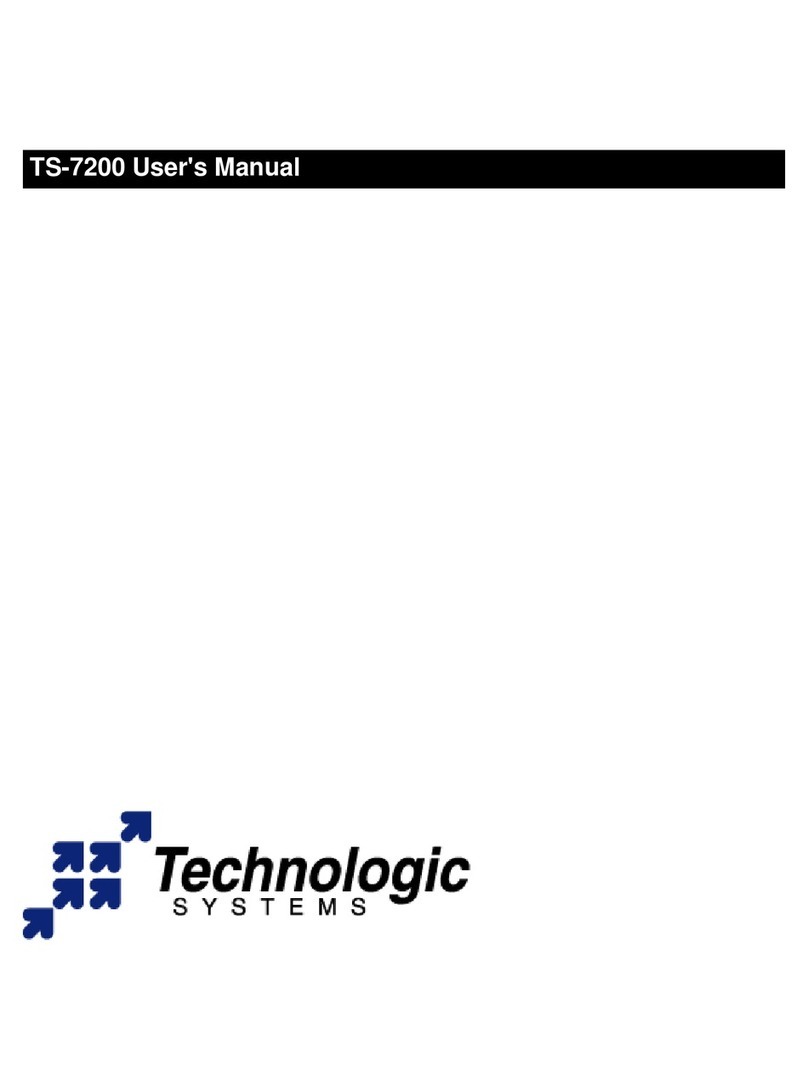
Technologic Systems
Technologic Systems TS-7200 User manual
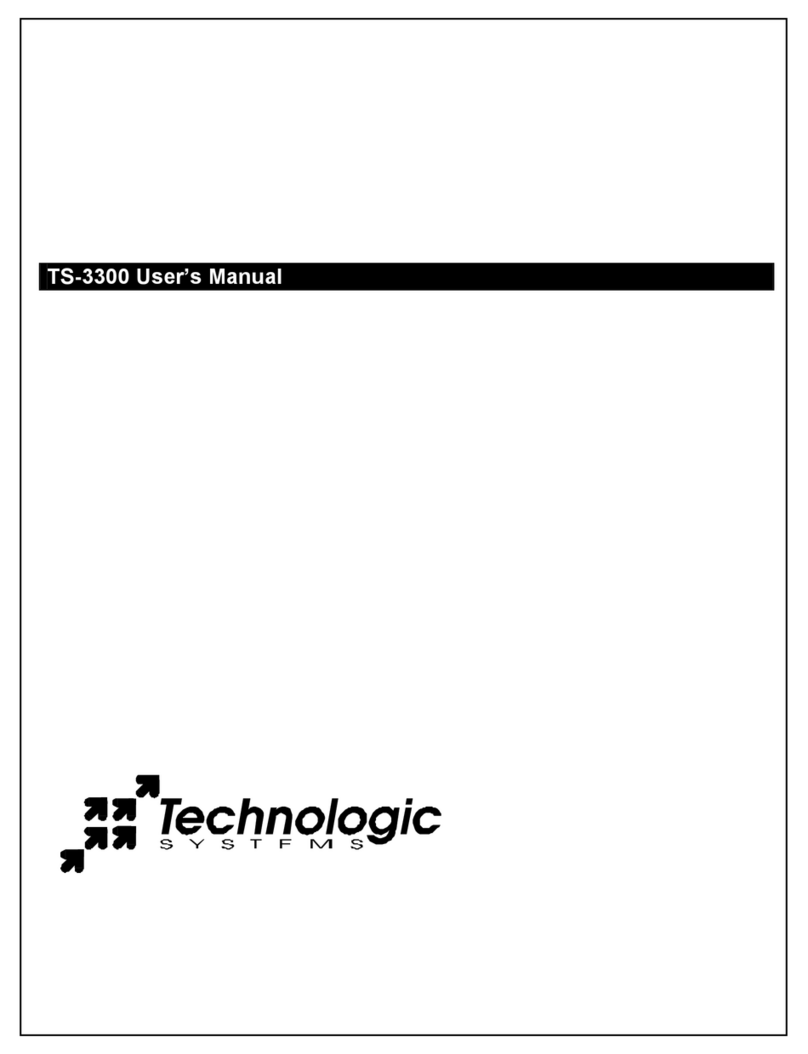
Technologic Systems
Technologic Systems TS-3300 User manual
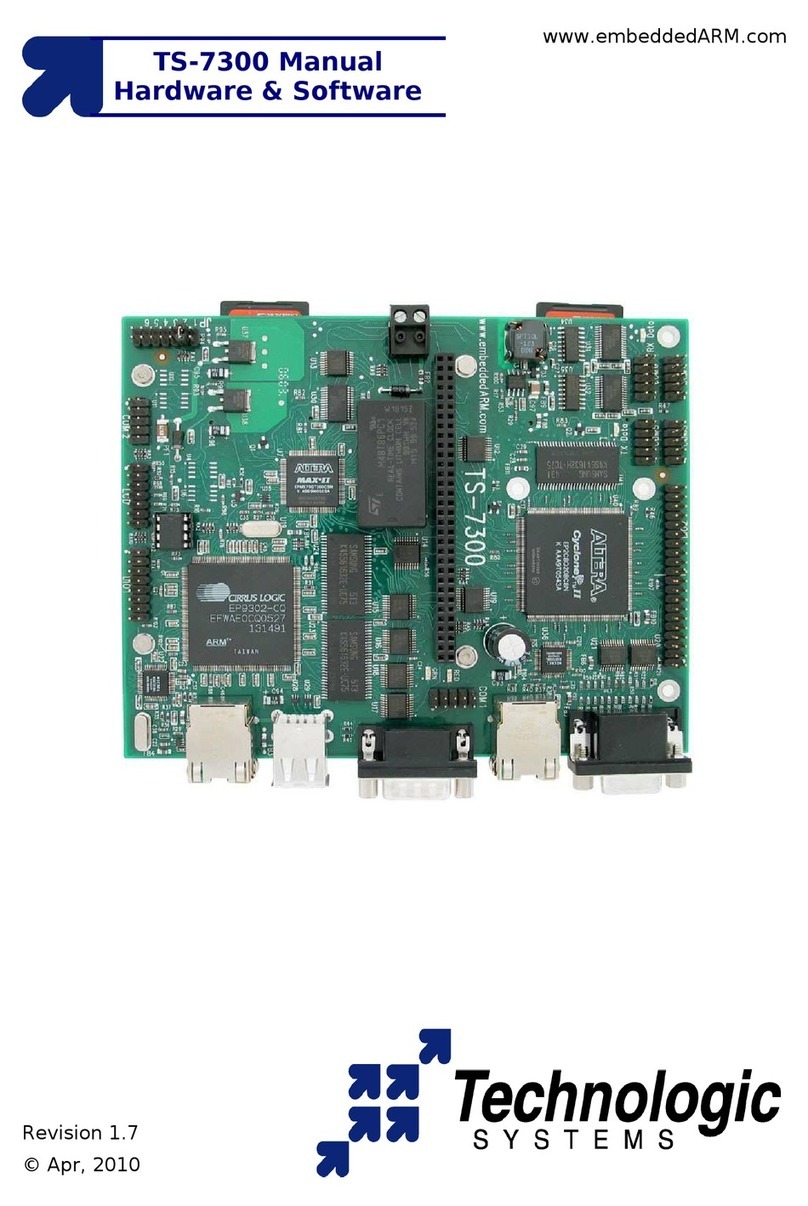
Technologic Systems
Technologic Systems TS-7300 User manual
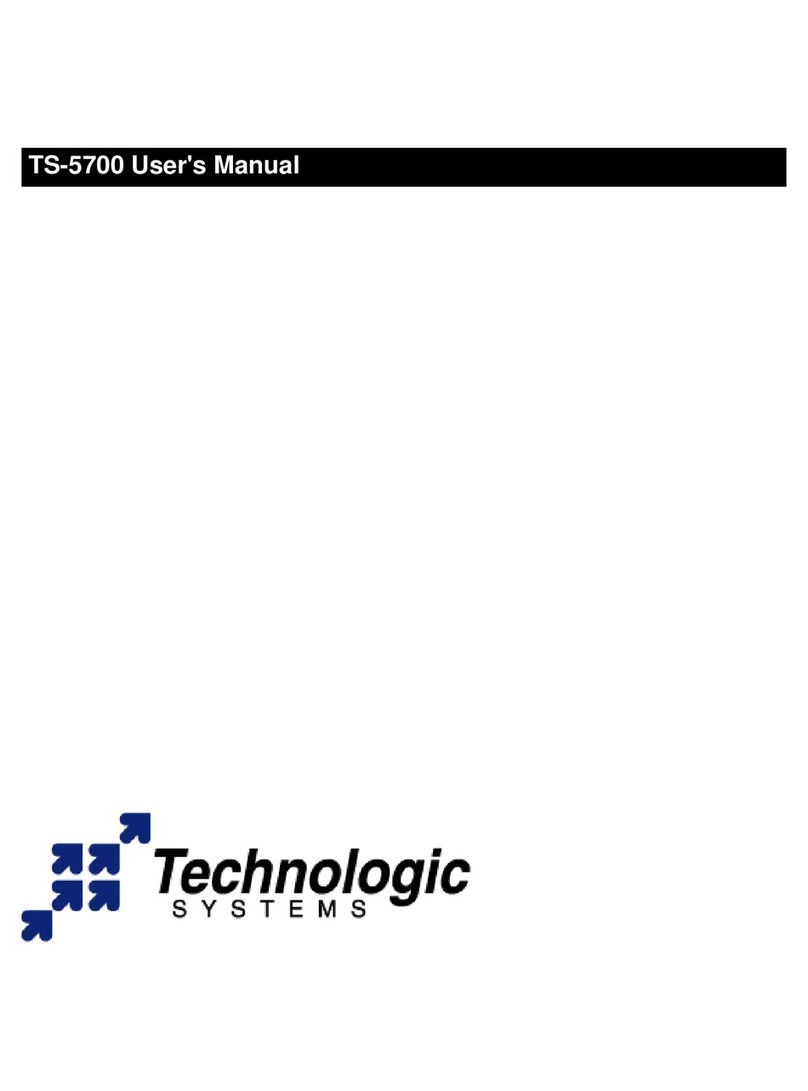
Technologic Systems
Technologic Systems TS-5700 User manual
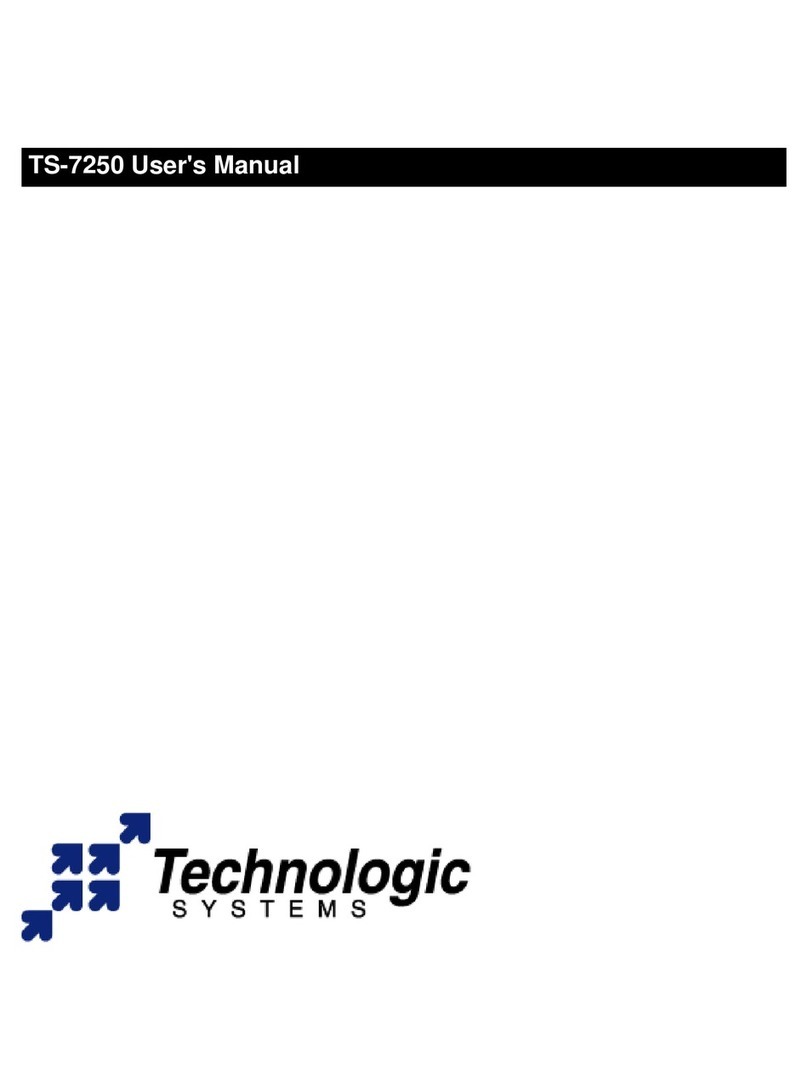
Technologic Systems
Technologic Systems TS-7250 User manual
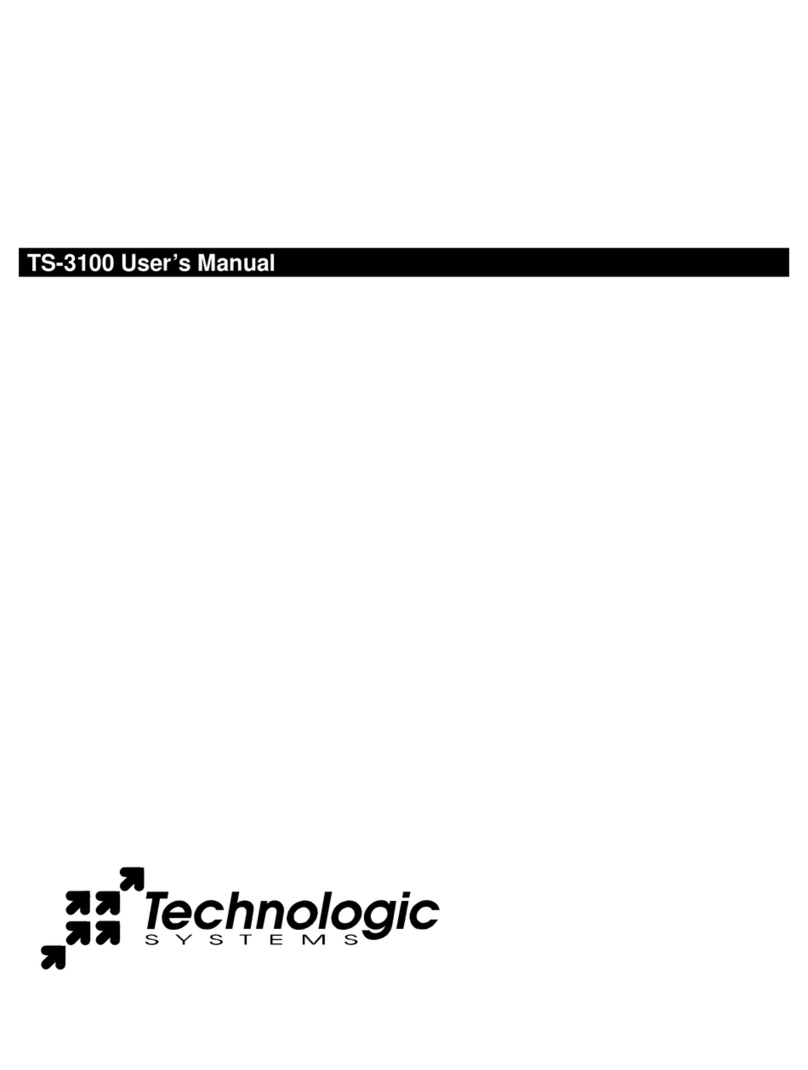
Technologic Systems
Technologic Systems TS-3100 User manual
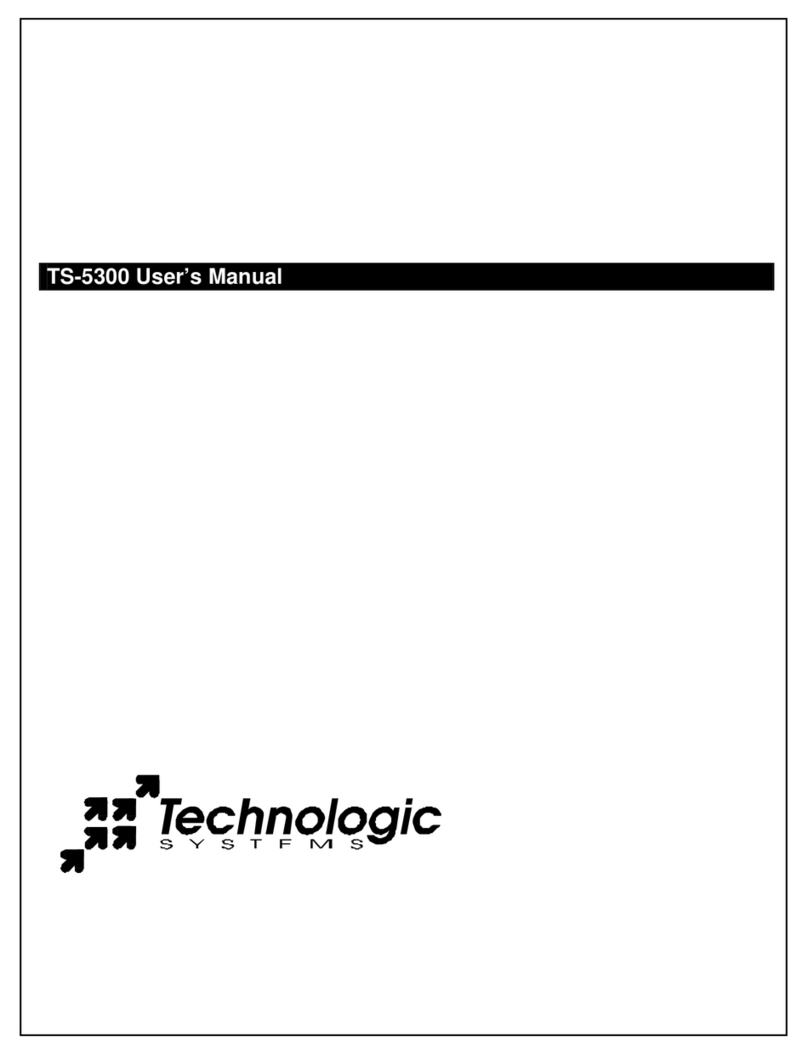
Technologic Systems
Technologic Systems TS-5300 User manual
